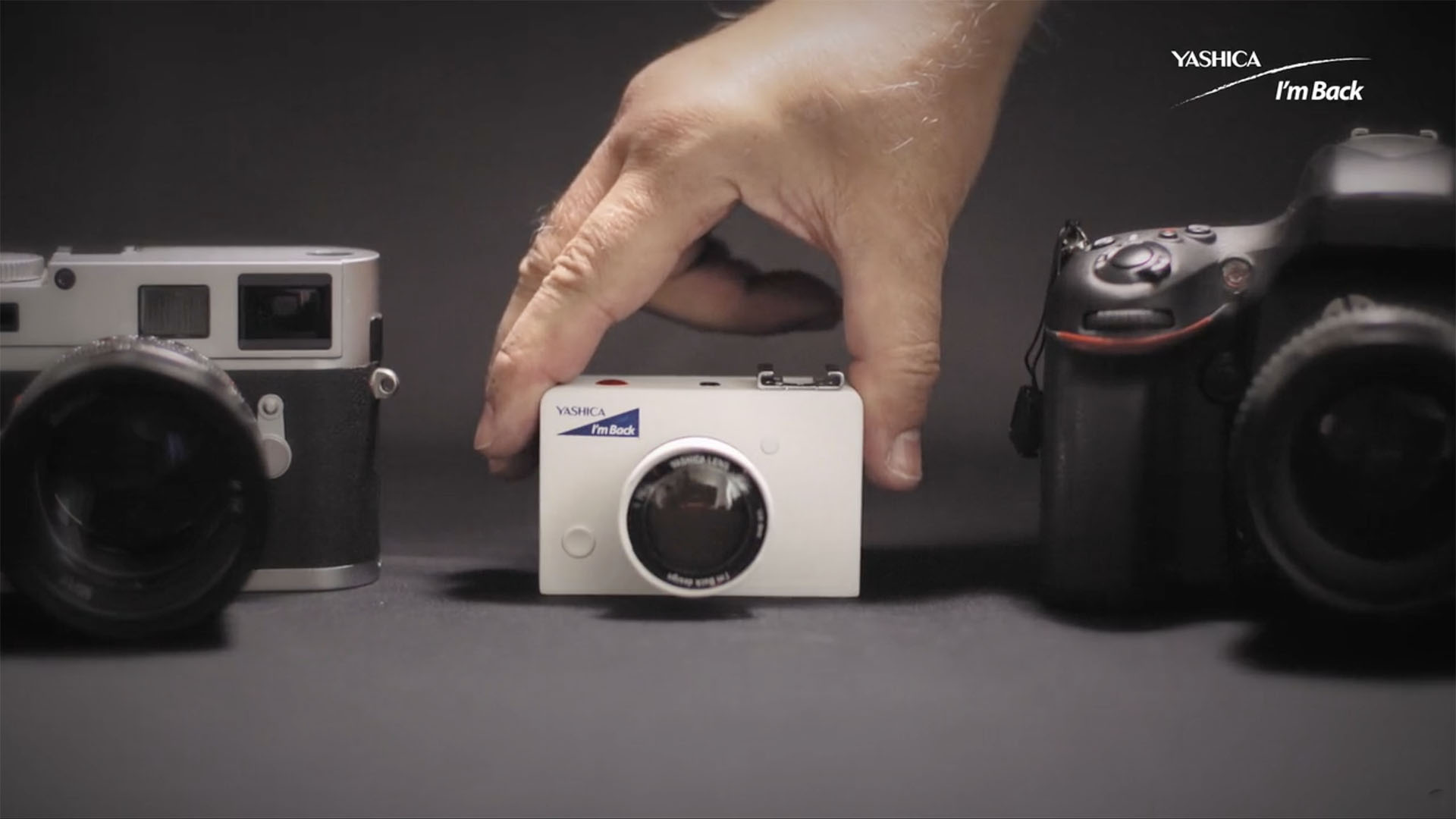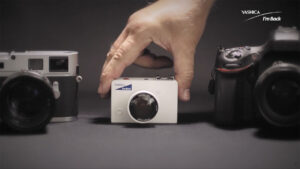

Micro Mirrorless camera system is a new Kickstarter campaign trying to balance compactness, quality, usability, and affordability. The outcome is an extremely compact interchangeable lens system aimed at travelers, content creators, and smartphone upgraders. Some details are yet to be disclosed as the new product seems to be in its early prototyping stages, but we’ll try to figure out this unique offering, hoping to get a working sample for further review in the near future. The concept of a small sensor interchangeable lens is quite charming, but no system smaller than Micro Four Thirds has managed to prove sustainability. There weren’t so many to start with, but Nikon’s “1” series was probably the most successful. Based on a 1″ sensor (x2.7 crop factor, about half the size of Micro Four Thirds), this system consisted of several camera bodies and a dozen lenses. Another system that seems a bit more closely related to the Micro Mirrorless camera system is the Pentax Q. This system forfeited professional aspiration for a more “chilled”, playful experience. A much smaller 1/2.3″ (x5.6 crop factor) sensor was used (with an upgraded 1/1.7″ for the “higher” models) and several lenses, including some “toy lenses”. Both systems proved unsustainable and are no longer in production, but sometimes indie makers can offer a fresh perspective.What is the Micro Mirrorless camera system? The Micro Mirrorless camera system is a compact, rather minimalistic camera with a new proprietary mount. At this point, we don’t know much more about the details, but we can confirm that it’s a manual focusing system, probably with no electronic camera-lens connections. At this point, it seems to have a 1/2.5″ sensor with x5.9 crop factor, based on my crop factor calculations. The sensor will provide 12-megapixel RAW/jpeg still images. Video resolution will top at 4K 3840×2160/24fps with 1080 up to 60fps, at MPEG4 or H.264. max ISO is 3200.Comparison with a full-sized camera. Image Credit: I’m back, YashicaBuild and ergonomicsThe Micro Mirrorless camera system has a fairly minimalistic square design. The general form follows action cameras, and with a stretch can even resemble the masterfully designed SIGMA fp (but don’t expect the same build quality from a product costing one-tenth of the SIGMA). The Micro Mirrorless system also offers a battery grip for extended sessions. A flip-out screen is also on board, and there is an additional attachable EVF mockup due later (with no set time frame at this point). No claims are made regarding weather sealing, etc. The Micro Mirrorless camera system will (of course) use a Micro SD card and will have a USB-C, Mini HDMI, and 3.5mm audio input ports. Micro Mirrorless ports. Image Credit: I’m back, YashicaLensesThree prime lenses will be available at launch: A 3.4mm wide lens (20mm equivalent), an 8.6mm normal lens (50mm equivalent), and a 25mm tele (150mm equivalent). The lenses seem to be in a relatively early prototyping stage, and no further details regarding aperture, minimum focus distance, etc. are available yet. The trio covers quite a wide range with relatively large gaps between the lenses. It does, however, outperform most smartphones in terms of tele range and is significantly smaller than any interchangeable lens system out there. The manufacturers also list a future lens adapter, but it seems not to have any optical booster, meaning every lens will be rather extreme tele considering the significant crop factor.The Micro Mirrorless initial wide, normal, and tele lenses. Image Credit: I’m back, YashicaBoth lenses and the camera body shown in the campaign seem (to me at least) to be relatively early stage prototypes, if not mockups, so things may change toward finalized product and mass production.AlternativesWhile no system around can match the Micro Mirrorless camera system for both compactness and affordability ($199 for the basic, early-bird kit) some other options will tick some of the boxes, with significant advantages regarding image quality and features. Entry-level interchangeable systems will start at about triple the price of the Micro Mirrorless camera system basic kit but possess quite significant advantages in most fields. Advanced compacts will usually come with a bigger sensor, decent zoom lenses, and all the modern perks such as autofocus tracking. One can also opt for action cameras or rugged compacts to add a layer of durability while maintaining compactness and image quality, but giving up optical flexibility. And of course, there are smartphones, the real assassins of compact cameras. While all are quite a bit pricier, they mostly offer much better quality and operability. They also have an additional important advantage – they already exist.The Micro Mirrorless camera system fits in the palm of your hand. Image Credit: I’m back, YashicaCrowdfunding heads up – read before you “buy”While the initial experience may feel similar, backing a crowdfunding campaign hasn’t much in common with buying a product. Supporting a campaign has its share of risks and challenges as not all campaigns have an end product to show for, even if fully funded. Even heavily funded campaigns sometimes conclude in subpar products. Such a campaign is Yashica’s former DigiFILM camera project, so take a good look at the terms and conditions before investing your hard-earned money into it. Price and availabilityThe Micro Mirrorless camera system campaign is online, and rewards vary between $199 (€182) for the early-bird basic kit up to $599 (€550) for a dual full kit. Shipping is due November 2024, but things sometimes change in the crowdfunding realm.Will you opt for this miniature system? Do you believe this innovative design has what it takes to compete where giants like Nikon and Pentax failed? Let us know in the comments.






